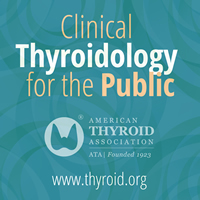Background
The limitation of diagnosis of transition zone (TZ) prostate cancer (PCa) using subjective assessment of multiparametric (mp) MRI with PI‐RADS v2 is related to overlapping features between cancers and stromal benign prostatic hyperplasia (BPH) nodules, particularly in small lesions.
Purpose
To evaluate modeling of quantitative apparent diffusion coefficient (ADC), texture, and shape features using logistic regression (LR) and support vector machine (SVM) models for the diagnosis of transition zone PCa.
Study Type
Retrospective.
Population
Ninety patients; 44 consecutive TZ PCa were compared with 61 consecutive BPH nodules (26 glandular/35 stromal).
Field Strength/Sequence
3 T/T2‐weighted (T2W) fast spin‐echo, diffusion weighted imaging.
Assessment
A radiologist manually segmented lesions on axial images for quantitative ADC (mean, 10th, 25th‐centile‐ADC), T2W‐shape (circularity, convexity) and T2W‐texture (kurtosis, skewness, entropy, run‐length nonuniformity [RLNU], gray‐level nonuniformity [GLNU]) analysis. A second radiologist segmented one‐fifth of randomly selected lesions to determine the reproducibility of measurements. The reference standard was histopathology for all lesions.
Statistical Tests
Quantitative features were selected a priori and were compared using univariate and multivariate analysis. LR and SVM models of statistically significant features were constructed and evaluated using receiver operator characteristic (ROC) analysis. Subgroup analysis of TZ PCa vs. only stromal BPH and in lesions measuring <15 mm was performed. Agreement in measurements was assessed using the Dice similarity coefficient (DSC).
Results
Mean, 25th and 10th‐centile ADC, circularity, and texture (entropy, RLNU, GLNU) features differed between groups (P < 0.0001–0.0058); however, at multivariate analysis only circularity and ADC metrics (P < 0.001) remained significant. LR and SVM models were highly accurate for the diagnosis of TZ PCa (sensitivity/specificity/AUC): 93.2%/98.4%/0.989 and 93.2%/96.7%/0.949, respectively, with no significance difference between the LR and SVM models (P = 0.2271). Reproducibility of segmentation was excellent (DSC 0.84 tumors and 0.87 BPH). Subgroup analyses of TZ PCa vs. stromal BPH (AUC = 0.976) and in <15 mm lesions (AUC = 0.990) remained highly accurate.
Data Conclusion
LR and SVM models incorporating previously described quantitative ADC, shape and texture analysis features are highly accurate for the diagnosis of TZ PCa and remained accurate when comparing TZ PCa with stromal BPH and in smaller lesions.
Level of Evidence: 3
Technical Efficacy: Stage 2
J. Magn. Reson. Imaging 2019.
from #Head and Neck by Sfakianakis via simeraentaxei on Inoreader http://bit.ly/2sX63dO
